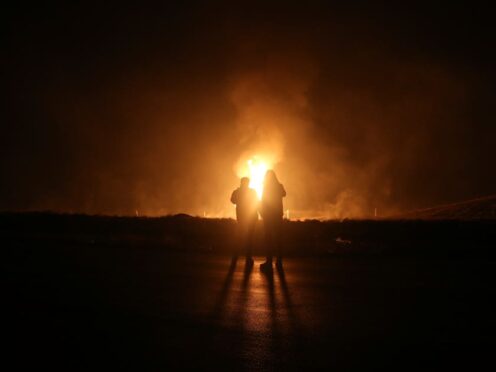An Israeli sabotage attack on an Iranian natural gas pipeline caused “multiple explosions” that struck it a week ago, Iran’s oil minister has claimed, further raising tensions amid Israel’s war on Hamas in the Gaza Strip.
The comments by Iran’s oil minister Javad Owji come as Israel has been blamed for a series of attacks targeting Tehran’s nuclear program.
The “explosion of the gas pipeline was an Israeli plot,” Mr Owji said, according to Iran’s state-run IRNA news agency.

He added: “The enemy intended to disturb gas service in the provinces and put people’s gas distribution at risk.
“The evil action and plot by the enemy was properly managed.”
Mr Owji provided no evidence to support his claims.
Israel has not acknowledged carrying out the attack, though the country rarely claims its espionage missions abroad.
The office of Prime Minister Benjamin Netanyahu has not yet responded to a request for comment.
The blasts on February 14 hit a natural gas pipeline running from Iran’s western Chaharmahal and Bakhtiari province up north to cities on the Caspian Sea.
The roughly 1,270-kilometre (790 mile) pipeline begins in Asaluyeh, a hub for Iran’s offshore South Pars gas field.
Mr Owji earlier compared the attack to a series of mysterious and unclaimed assaults on gas pipelines in 2011 – including around the anniversary of Iran’s 1979 Islamic Revolution.
Tensions over Iran’s nuclear program come as groups that Tehran is arming in the region — Lebanon’s militant group Hezbollah and Yemen’s Houthi rebels — have launched attacks targeting Israel over the war in Gaza.
The Houthis continue to attack commercial shipping in the region, sparking repeated airstrikes from the US and the UK.
Despite a month of US-led airstrikes, the Houthi rebels remain capable of launching significant attacks.
This week, they seriously damaged a ship in a crucial strait and downed an American drone worth tens of millions of dollars.
On Wednesday, ships in the Red Sea off the Houthi-held port city of Hodeida in Yemen reported seeing an explosion, though all vessels in the area were said to be safe, according to the British military’s United Kingdom Maritime Trade Operations centres. The UKMTO earlier reported heavy drone activity in the area.
Meanwhile, a suspected Israeli strike killed two people in a neighbourhood in Syria’s capital, Damascus, on Wednesday, an area where other likely Israeli strikes have targeted members of Iran’s paramilitary Revolutionary Guard.
